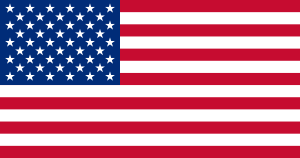Tax implications for Canadians working in the U.S.
Allan Madan, CPA, CA
Are you a Canadian who has a temporary work assignment in the United States? If yes, then this video is for you. Keep reading to be aware of the relevant tax issues, including how to avoid double taxation.

Assume that you remain a tax resident of Canada while working temporarily in the US, because your permanent home is still in Canada, and you have many, many ties to Canada including your family, credit cards, bank accounts, driver’s license, health benefits and so on.
As a resident of Canada, you will continue to pay Canadian taxes on your worldwide income. This includes employment income earned in the US. How is tax residency determined? Well, according to the US-Canada Tax Treaty you are a resident of the country where your permanent home is located. If you have a permanent home in both Canada and the US, then you are a resident of the country where your economic and personal ties are strongest.
In addition to paying Canadian taxes on your worldwide income, you must also file a Non-Resident US Tax Return, called a 1040NR. On this tax return, you will report your American earnings only and pay US federal and state taxes on those earnings to the IRS. At this point, you’re likely to upset that you had to pay taxes twice on the same income- first to the CRA and then again to the IRS. Fortunately, the taxes paid to the IRS will be credited to you on your Canadian personal tax return in the form of a Foreign Tax Credit. Through the Foreign Tax Credit mechanism, you avoid paying double tax.
There are two ways employers report your US earnings. The most common of these two is reporting your US earnings on a Wage and Tax Statement called a W2. If you do not receive a W2 slip, then your accountant will have to prorate the total employment income reported on your T4 slip between the two countries, based on the number of working days spent in the US and Canada.
As a final point to remember, keep track of the number of days spent in the US. If the total days is more than 122, then you will have to complete a special form to prove to the IRS that you are a non-resident of the US and a resident of Canada because your ties are strongest with Canada. This form is called the Closer Connections Exemption. For more information about Canadian non-residents, have a look at our article on becoming a non-resident of Canada.
Disclaimer
The information provided on this page is intended to provide general information. The information does not take into account your personal situation and is not intended to be used without consultation from accounting and financial professionals. Allan Madan and Madan Chartered Accountant will not be held liable for any problems that arise from the usage of the information provided on this page.




SOCIAL CONNECT